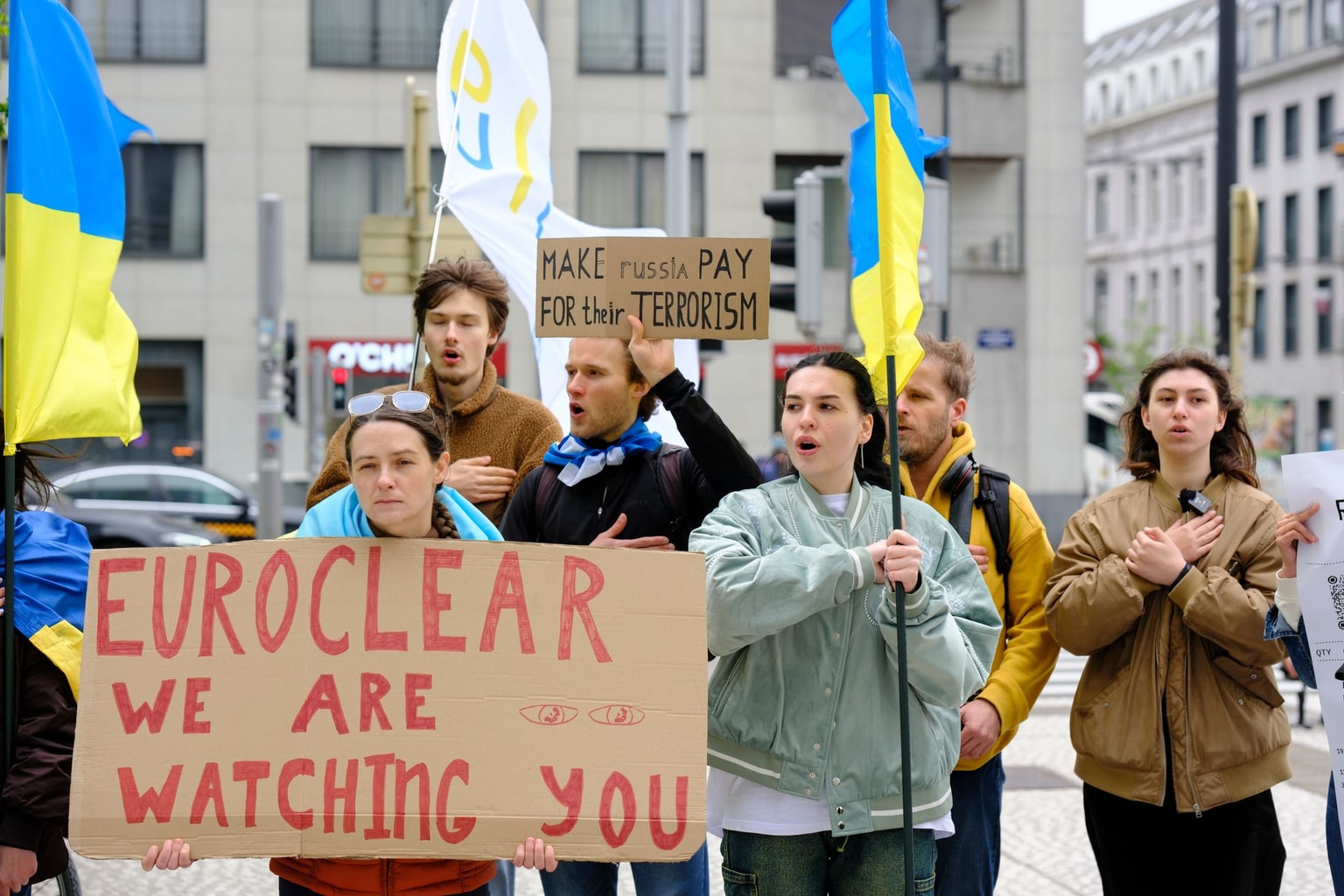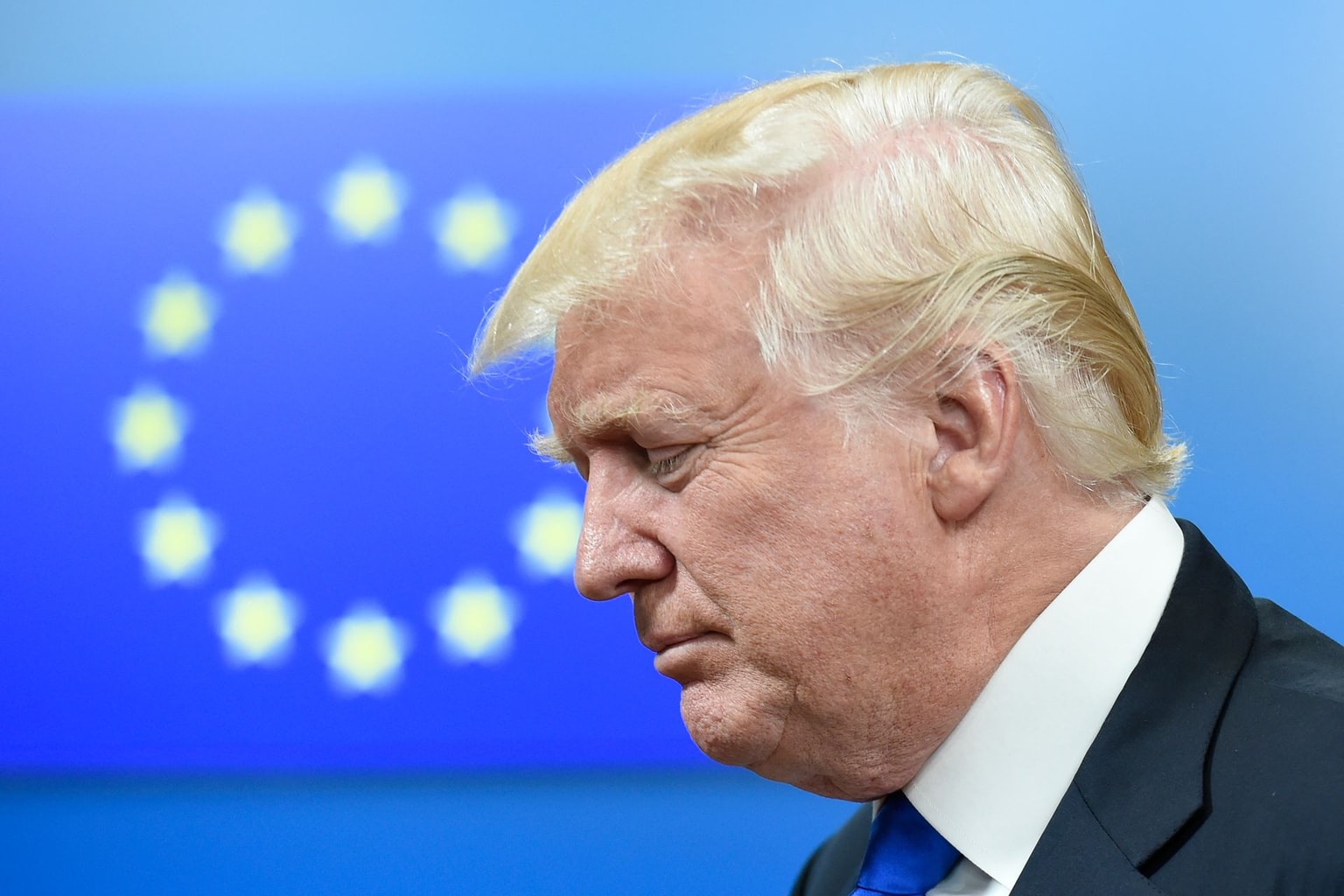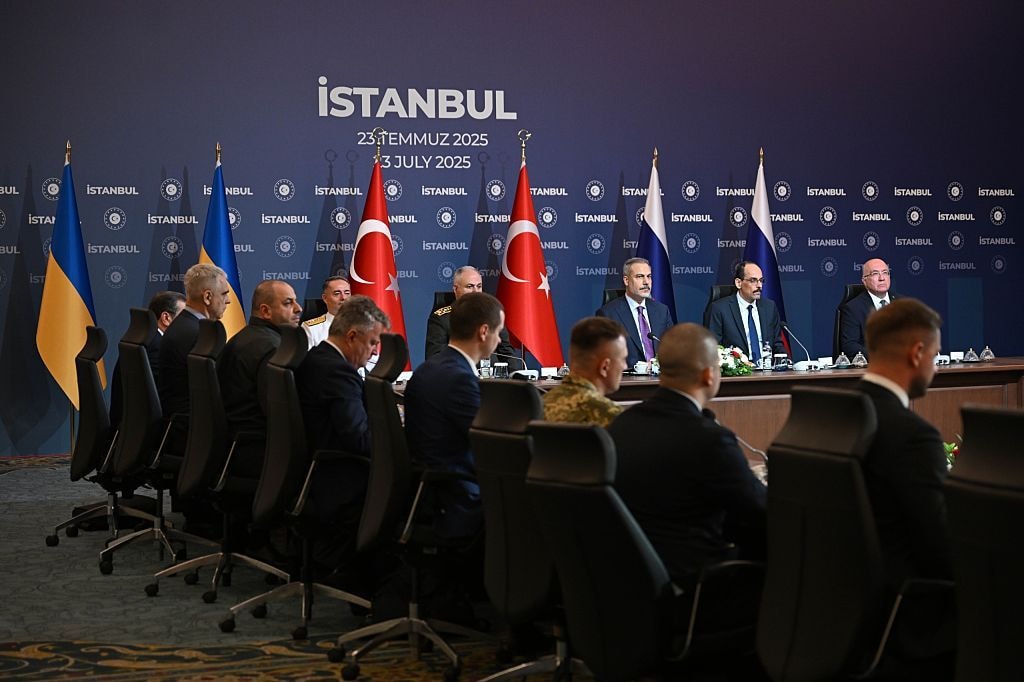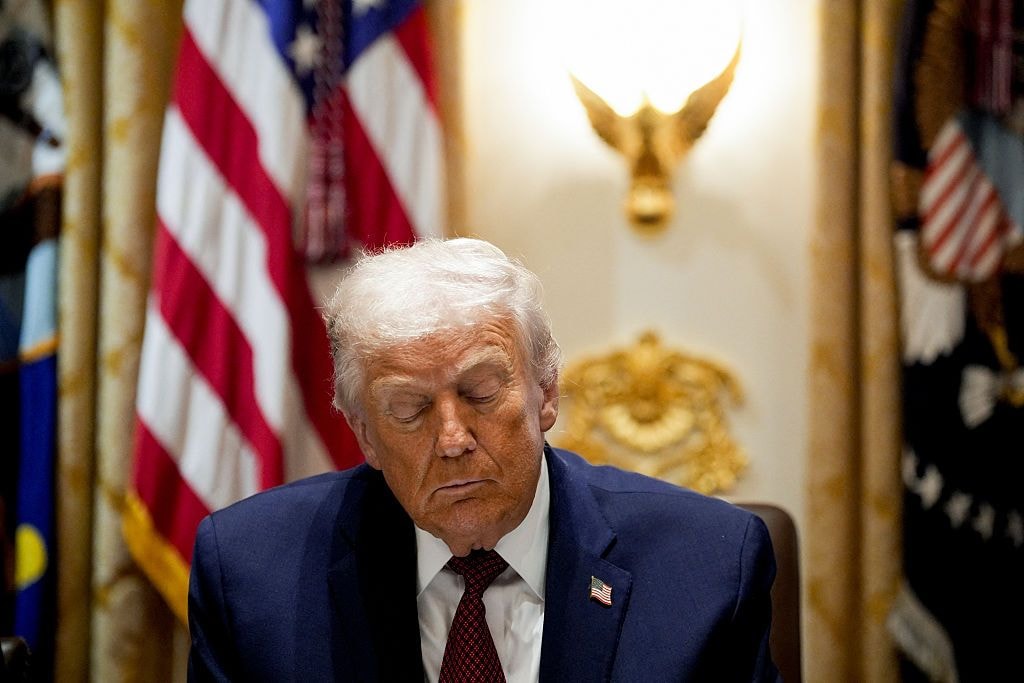Ukraine war latest: 78 states, organizations sign Ukraine peace summit’s joint communique

Key developments on June 16:
- 78 countries, 4 European institutions sign peace summit's joint communique
- US announces $1.5 billion in aid for Ukraine, including support for energy infrastructure
- At least 70 drones used in attack on Russia's Morozovsk airbase, Budanov confirms
- Russia suffered 4,000 casualties in a month of fighting in Kharkiv offensive, Ukraine says
- Zelensky: Russia launches 3,500 missiles a month on civilian targets, infrastructure
Seventy-eight countries, including Ukraine, and four European institutions signed the final joint communique of the Switzerland peace summit on June 16, according to a Kyiv Independent reporter on the ground.
The countries notably absent from the list of signatories include India, Armenia, Saudi Arabia, Libya, Indonesia, Bahrain, Colombia, South Africa, Thailand, Mexico, and the United Arab Emirates.
Representatives of around 100 countries and organizations gathered at the Burgenstock resort in Switzerland on June 15-16 to discuss a possible way toward peace and other key concerns related to Russia's ongoing war against Ukraine.
Russia was not invited to attend.
Brazil, present as an observer in the list of 92 confirmed participant countries shared by the Swiss Foreign Ministry on June 14, has also not signed the communique.
The organizations that signed the document are the Council of Europe, the European Commission, the European Parliament, and the European Council.
The communique called to return the Russian-occupied Zaporizhzhia Nuclear Power Plant under full control of Ukraine, ensure uninterrupted manufacturing and supply of food products in Ukraine, secure full access to sea ports in the Black and Azov Seas, release all prisoners of war, and return all deported Ukrainian children, among other things.
The document also declared any threat or use of nuclear weapons in the context of Russia's war against Ukraine inadmissible and attacks on ships and civilian ports unacceptable.
"We believe that reaching peace requires the involvement of and dialogue between all parties. We, therefore, decided to undertake concrete steps in the future in the above-mentioned areas with further engagement of the representatives of all parties," adds the text.
"The United Nations Charter, including the principles of respect for the territorial integrity and sovereignty of all states, can and will serve as a basis in achieving a comprehensive, just and lasting peace in Ukraine."
Countries that have not attended the summit will be able to sign the communique later, Ukraine's Presidential Office head, Andriy Yermak , said on national television on June 15.
In a final statement following the summit, President Volodymyr Zelensky said that the signatories would work in groups on the issues mentioned in the communique as the next step. He added that when an action plan is ready to implement each point declared in the document, the second peace summit could take place.
"We don't have time for long-term work. Moving toward peace means moving quickly. Preparation will take months, not years."
Yermak previously said on the sidelines of the summit that Kyiv hoped to formulate a new joint peace plan based on Zelensky's 10-point peace formula but was open to all opinions from other countries.
This plan could then be presented to Russia during a second summit, Yermak added.
The peace formula includes Russia's full withdrawal from Ukraine and prosecution of war crimes, among other steps.
US announces $1.5 billion in aid for Ukraine, including support for energy infrastructure
The U.S. will provide Ukraine with $1.5 billion in aid to support the country's energy infrastructure, address urgent humanitarian needs, and bolster civilian security, including the protection of the border, Vice President Kamala Harris said on June 15.
In recent months, Russia has intensified its attacks against Ukraine's critical infrastructure in a renewed assault against the country's energy grid.
As a result of the attacks on energy infrastructure, Ukraine began implementing rolling shutdowns on May 15, but they have dramatically increased in recent days.
Harris made the announcement as she joined Ukraine's global peace summit in Switzerland.
The package, which is jointly funded by the State Department and the U.S. Agency for International Development (USAID), will include $500 million in energy assistance, as well as the redirection of $324 million in previously announced funding toward emergency energy needs in Ukraine.
"This funding will repair energy infrastructure damaged in the war, expand power generation, encourage private sector investment, and protect energy infrastructure," the statement on the White House's website read.
The assistance also includes $379 million in humanitarian assistance from the U.S. government and USAID to address the needs of refugees, internally displaced persons, and conflict-affected communities.
The State Department further aims to provide an additional $300 million for the lifesaving equipment of Ukrainian border guards and law enforcement, allowing them to operate on the front lines.
Since the start of Russia's full-scale invasion in February 2022, the United States has devoted more than $3.2 billion in humanitarian assistance funding and nearly $1.5 billion to help the recovery of the energy sector.
At least 70 drones used in attack on Russia's Morozovsk airbase, Budanov confirms
The Morozovsk airfield, located in Russia's Rostov Oblast, was attacked by at least 70 drones on June 13, the War Zone media outlet said on June 14, citing Ukraine's military intelligence chief Kyrylo Budanov.
Rostov Oblast Governor Vasily Golubev said the previous day that Russian air defense units faced a "mass attack" of drones, which caused a fire and disruptions to the local power supply.
Russia's Defense Ministry then said that 70 drones had been shot down over the oblast.
Budanov said that he was "waiting for information" about the extent of the damage caused at the airfield, which satellite imagery has confirmed hosts Su-34 fighter jets.
The War Zone republished satellite imagery from Planet Labs, which showed both jets at the airfield before the attack and some subsequent evidence of damage caused.
Russian Telegram channels conceded that the attack on the airbase had occurred, but some claimed that all the drones had been downed, while others claimed that some had struck the airbase and possibly killed as many as six pilots.

The claims could not be independently verified, and Budanov did not comment on possible casualties.
It was not the first reported attack on the Morozovsk airbase, which is located some 180 kilometers (111 miles) from the Ukrainian border.
Sources confirmed to the Kyiv Independent that drones had struck the airbase in April in a joint operation carried out by the Security Service of Ukraine (SBU) and the Ukrainian military.
At least six military aircraft were destroyed, and another eight were damaged, according to the source. Furthermore, about 20 Russian soldiers were reportedly killed or wounded.
The Kyiv Independent could not independently verify the information.
When asked if Ukraine planned to attack the airbase again, Budanov said "yes."
Russia suffered 4,000 casualties in a month of fighting in Kharkiv offensive, Ukraine says
Russian forces suffered around 4,000 troops killed or injured during their offensive in northern Kharkiv Oblast between May 10 and June 10, Ukraine's Khortytsia group of forces said on June 14.
Russia launched the new campaign on May 10, but it has effectively bogged down in just about two weeks, with Ukrainian forces counterattacking near the border town of Vovchansk.
The Ukrainian Armed Forces further damaged or destroyed 52 Russian tanks, 59 armored vehicles, 165 artillery systems, six units of air defense equipment, 425 bunkers and shelters, and 37 ammunition warehouses in a month of fighting, the statement read.
The losses do not include casualties Russian forces suffered in the Kupiansk sector in Kharkiv Oblast's northeast.
European Pravda reported on June 13 that according to its undisclosed NATO source, Russian losses in the offensive have been "astronomical."
The source estimated that "Russia likely suffered losses of almost 1,000 people a day in May," potentially indicating even higher numbers than those presented by the Khortytsia group.
President Volodymyr Zelensky said in an interview published on May 25 that Russia's losses during the offensive were eight times higher than those suffered by Ukraine's Armed Forces.
The figures could not be independently verified.
Zelensky: Russia launches 3,500 missiles a month on civilian targets, infrastructure
Russia fires around 3,500 missiles a month on Ukrainian civilian targets and infrastructure, according to President Volodymyr Zelensky, Italian TV channel Sky TG24 reported on June 14.
Zelensky referred to the KAB missiles, Russian precision-guided weapons used to strike front-line settlements.
During an interview with the TV channel, Zelensky said that the missiles are only used on civilian targets to force citizens to flee cities and villages in preparation for Russian occupation.
"The same thing was done by (Adolf) Hitler. It's actually the same manual," he said.
He stressed that Russia lies when claiming to only hit military targets.
Zelensky also noted that Russia wanted to occupy Kharkiv, Ukraine's second-largest city, but failed as Ukraine's military stabilized the situation.
Russia opened up a new offensive in northern Kharkiv Oblast on May 10, but Ukraine prevented Russian troops from advancing past the first line of defense.
Russia has relentlessly targeted Kharkiv with glide bombs, amping up the attacks in early May. However, attacks have reduced after Washington late last month approved for Ukraine to use American weapons to hit targets inside Russia.
Following the lift of the ban, Ukrainian forces struck missile launch positions in Russia.
During the interview, Zelensky thanked U.S. President Joe Biden for continued support after Kyiv and Washington signed an unprecedented bilateral security agreement during the G7 summit in Italy on June 13.
Zelensky said the deal, "clearly states that America supports Ukraine's efforts to win this war." He described the agreement as a "bridge" to Ukraine's future NATO membership.
The text states that the U.S. "commits to support Ukraine in developing a modern, NATO-interoperable force that can credibly deter and, if necessary, defend against future aggression," including developing Ukraine's air and missile defense, cybersecurity, and maritime capabilities.
The U.S. also commits to working toward procurement of squadrons of modern fighter aircraft, "including, but not limited to, F-16s," according to the text.












